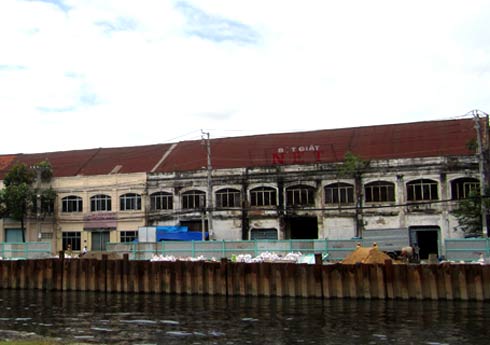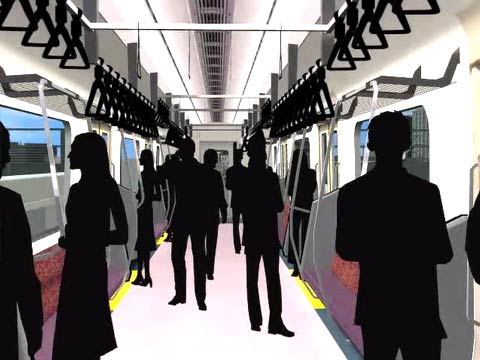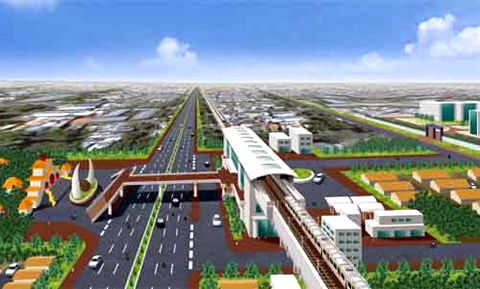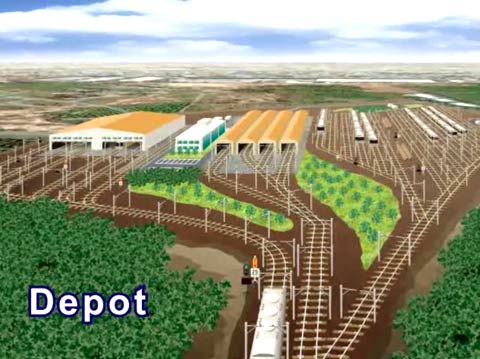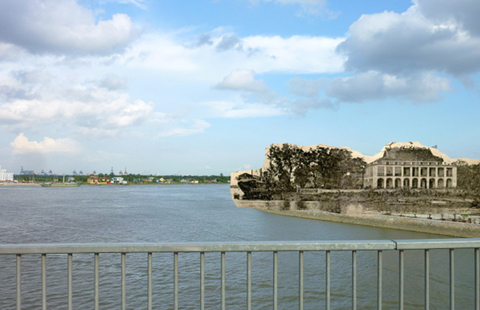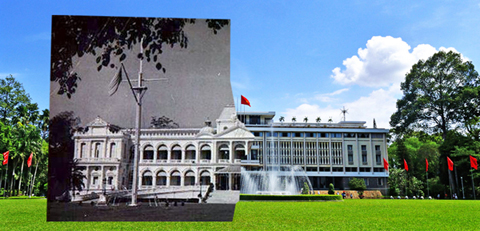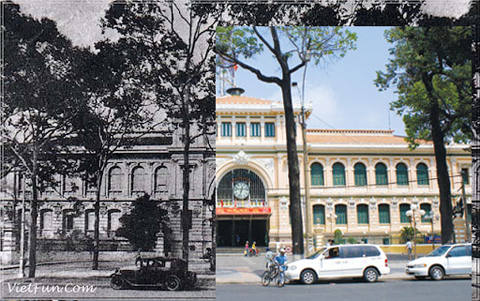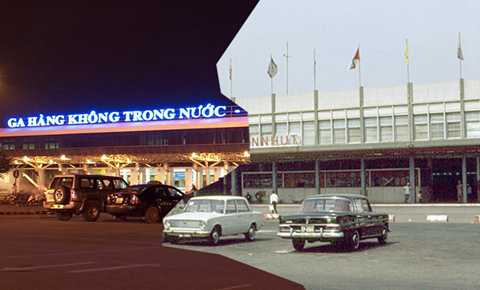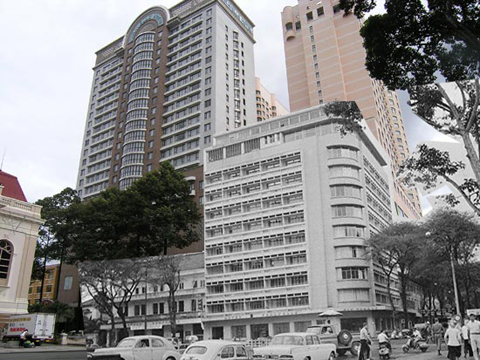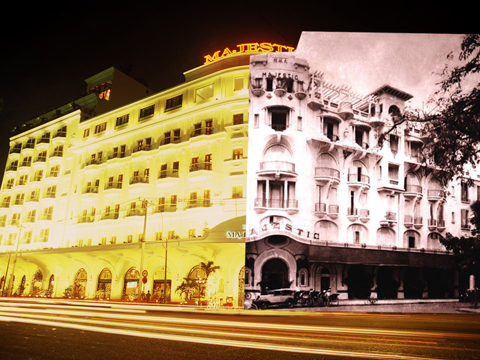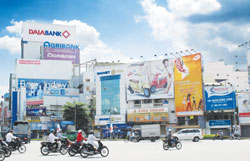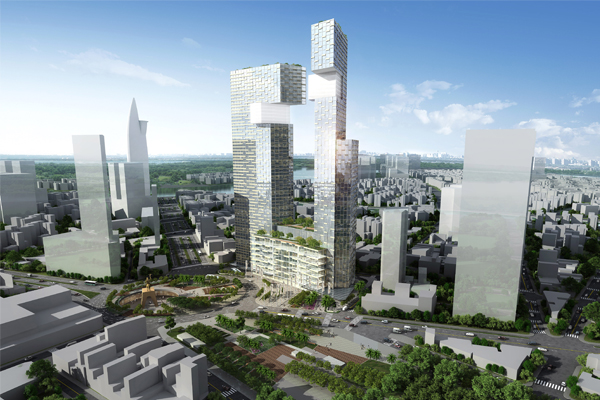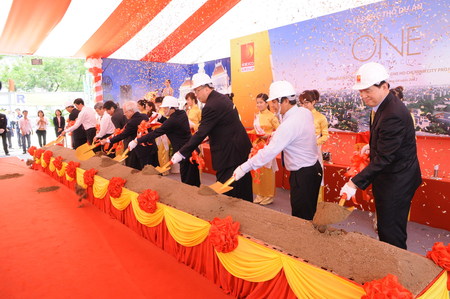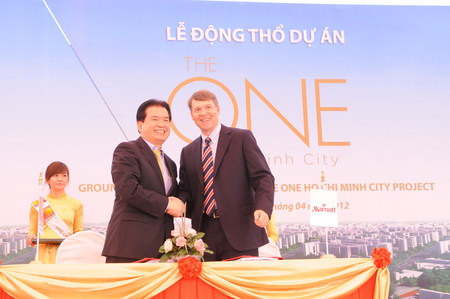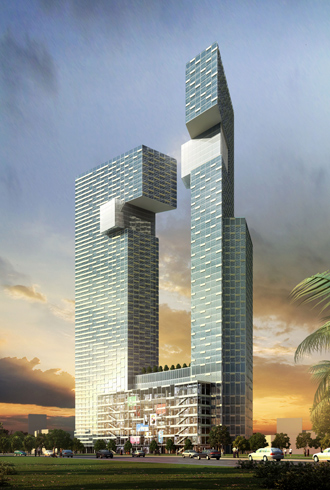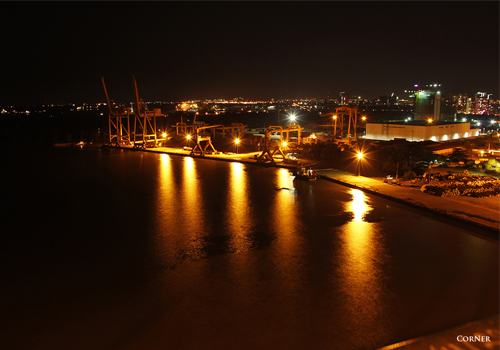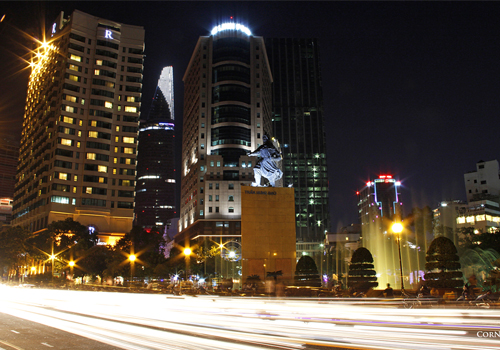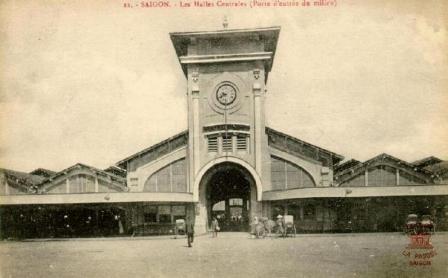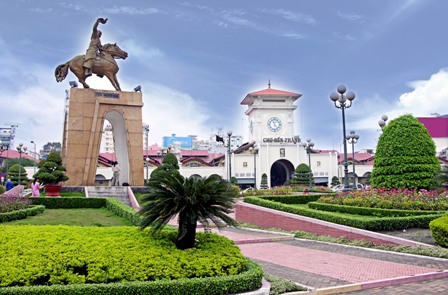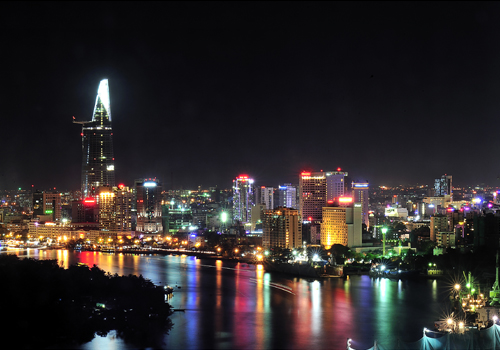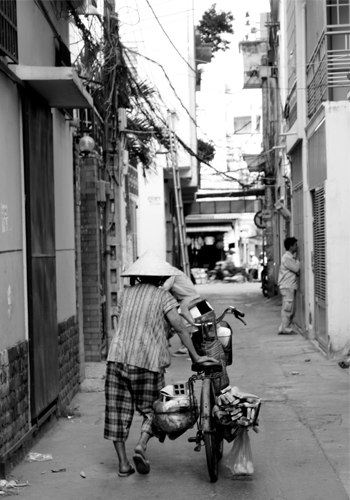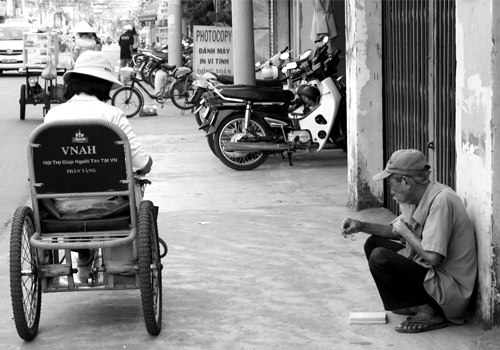Post by F. Guillemot on 2013-01-27 22:38:37
Considéré dans années 1990 comme le nouveau tigre d’Asie du Sud-est, le Vietnam voit aujourd’hui son taux de croissance chuter. Les inégalités se creusent dans les grandes villes, et à l’ombre des tours de verre étincelantes vivent les laissés-pour-compte de la mondialisation. Alan, Dinh et Manh, trois garçons des rues, en font partie.

© 2013 Elsa Guippe
En débarquant à Hô-Chi-Minh-Ville (ex-Saïgon), on est pris d’un léger vertige. Il y règne une chaleur moite qui se matérialise parfois sous la forme d’une épaisse brume de pollution. Un bourdonnement permanent se répercute sur tous les murs de la ville, c’est le bruit de quatre millions de mobylettes. Une odeur entêtante flotte dans l’air. Un mélange d’encens, de nuoc-mâm, de goudron chaud, d’herbe mouillée, d’ananas fraichement coupé, d’urine et de gaz d’échappements.
Saïgon, l’œil du dragon, comme on dit. Ici, personne ne l’appelle par son nom officiel. Jusqu’à la fin du 19ème siècle, la capitale économique du Vietnam n’était qu’un ensemble de cabanes en bambou posé sur des marécages infestés de moustiques, non loin du Mékong qui s’écoulait paresseusement entre les rizières. Avant, un village de paysan. Aujourd’hui, une mégalopole en effervescence, qui compte plus de sept millions d’habitants, des autoroutes à quatre voies, et bientôt un réseau de métro.
L’œil du dragon, donc. Il m’observe avec malice par l’entrebâillement d’une porte. Bordé d’immenses cils noirs et barré d’une grosse griffure encore suintante, cet œil est celui de Anh. Ou Alan, car c’est comme ça qu’il préfère qu’on l’appelle, mais je n’ai jamais réussi à lui faire dire pourquoi. C’est lui qui m’accueille à la « Shelter », une association qui recueille les enfants des rues. La porte s’ouvre, et il se faufile, pieds et torse nus, vêtu d’un simple short rouge. Il me lance un « hello ! » comme il me lancerait un défi. A l’intérieur, des silhouettes traversent les couloirs furtivement, comme des petits fantômes, d’autres dorment à même le sol. Il y fait sombre et moite, 35° C, car il n’y a pas de climatisation et peu de fenêtres. Des ventilateurs sans grilles tournent au ralenti. Je prends place dans le bureau de Miss Phat, la directrice, qui n’est pas encore arrivée. Alan me tend une canette de soda tiède. Je lui demande s’il n’a pas mal à l’œil, mais non, il n’a pas mal.
Alan
Alan a quinze ans mais en parait tout juste douze. Il est du genre à apprendre un morceau de guitare en cinq minutes ou à résoudre en un claquement de doigts un Rubik’s cube qu’on laisse trainer sur le coin d’une table. Mais il déteste l’école. Arrivé début 2009 à la Shelter, il n’en est jamais reparti. Miss Phat s’en plaint. Quand les enfants restent, c’est mauvais signe. L’association n’est qu’une solution temporaire. Alan a perdu contact avec sa mère, quand elle s’est mariée avec son beau-père, un homme violent. Il s’est retrouvé à la rue, livré à lui-même, pendant des années. Il a longtemps fréquenté un touriste américain. C’est pour ça qu’il parle anglais. Avant, Alan était ce petit garçon parmi tant d’autres, qui s’était fait rattraper par les réseaux de prostitution. Aujourd’hui, il s’apprête à intégrer un centre de formation pour apprendre à devenir cuisinier.
Dinh
Dinh, toujours souriant, me salue chaleureusement, et me montre qu’il est fier de sa casquette des Yankees. Il l’a achetée aux Etats-Unis, où il a passé trois semaines grâce à l’obtention d’une bourse. Il y retournera bientôt, pour y poursuivre ses études. Déjà, quelque chose en lui en a changé. Il parle bien anglais et s’habille comme ses héros de série TV. Il fait la bise et serre la main, alors que les contacts physiques sont rares au Vietnam. Arrivé à la Shelter à l’âge de quinze ans, après avoir vécu dans la rue, sans papiers d’identité, il en a aujourd’hui 19. Avant, Dinh était un fantôme, qui avait disparu des écrans de contrôle. Aujourd’hui, il est quelqu’un.
Manh
Manh, habillé en mode « gangsta-rap US », vient vers moi. Il tient un petit chiot dans ses bras. J’éclate de rire. A tout juste treize ans, c’est une vraie brute. Il ne parle pas, il crie, et il terrorise les plus jeunes. Personne ne connait son vrai nom. Abandonné par sa mère quand il était bébé, il a vécu un temps avec sa tante, et a travaillé très tôt, comme vendeur de casques de moto. Puis, la mafia locale est venue le chercher pour lui proposer de gagner plus d’argent. Il a longtemps traîné dans les gangs, et se droguait à la colle. Depuis, il est victime de graves troubles neurologiques. Manh est un dur, et il sait se débrouiller. Mais pour l’instant, personne ne l’attend, dehors.
« Des prisons pour enfants »
Miss Phat surgit dans la pièce. Poignée de main ferme. Débordée, elle jongle toute la journée entre ses dossiers de demande de financement. Chaque mois, la Green Warm Bamboo Shelter (GWBS), héberge entre 20 et 25 garçons. Elle recueille les enfants sans abris, proches de la criminalité ou victimes de maltraitances (violences, travail forcé, prostitution), ainsi que les jeunes toxicomanes. L’association offre un toit, des repas, et surtout une possibilité de réinsertion dans le système scolaire ou le monde du travail dès 16 ans. Le nombre d’ONG locales et étrangères au Vietnam augmente régulièrement. Selon le Programme des Nations Unies pour le Développement, leur travail d’hyperproximité les rend plus efficaces pour atteindre les quartiers et les catégories de population que l’Etat ne parvient pas à aider. Mais cet essor a entraîné de nombreuses dérives : détournement d’argent, absence de transparence dans les budgets... Le flou juridique qui entoure leur action est souvent pointé du doigt. Dans le cas de la GWBS, il s’agit d’un programme approuvé par les autorités publiques. Des inspecteurs mandatés par le gouvernement viennent régulièrement effectuer des contrôles, ce que Phat ne voit pas d’un très bon œil. La plupart du temps, l’Etat emploie des méthodes plus expéditives concernant les « vagabonds ». Elle explique : « Je n’ai pas beaucoup de place, ici. Mais j’essaye d’accueillir un maximum de garçons. Ce que je veux éviter, c’est qu’ils se fassent attraper dans la rue par la police et qu’ils soient envoyés dans des centres. » Human Rights Watch a dénoncé les rafles organisées à Saigon et Hanoï pour nettoyer les rues et les placer dans des centres sociaux. « Ce sont des prisons pour enfants, ils sont détenus dans des conditions inhumaines », explique un éducateur.
Alan, Dinh et Manh, sont nés dans les années 1990. Ils n’ont pas connu les bombardements de l’armée américaine, et pourtant eux aussi ont fait la guerre en quelque sorte. Celle que vivent tous les enfants des rues de Saïgon. Pas de tanks ou d’hélicoptères à l’horizon, mais tous les jours, ils avancent en terrain miné. On en compte des dizaines de milliers comme eux dans tout le pays. Une véritable armée d’âmes silencieuses, de petits soldats du quotidien. Ils ont pour seule arme leur volonté de s’en sortir. A quelques kilomètres de là, on peut encore voir les cratères des bombes, et presque entendre leur sifflement.
Elsa Guippe, 16/01/2013.
24 ans Paris Diplômée en droit et science politique Aventurière et des rêves plein la tête.
Source : Blog Le Monde



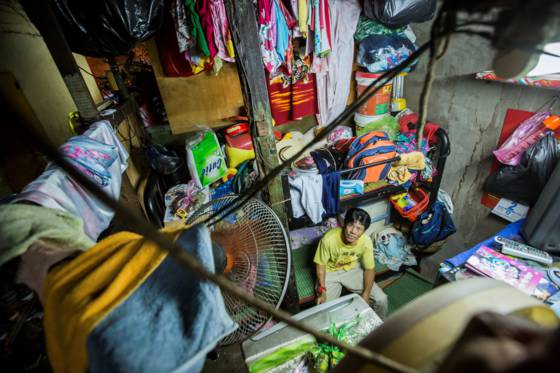
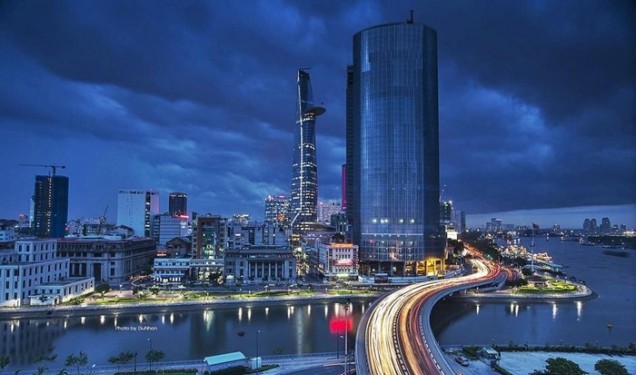
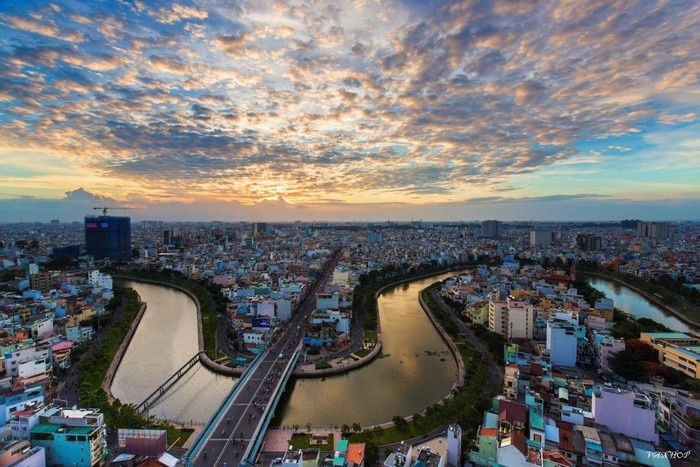
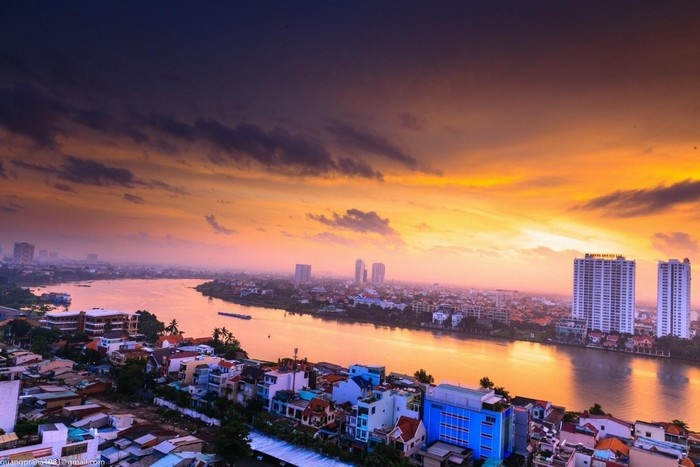
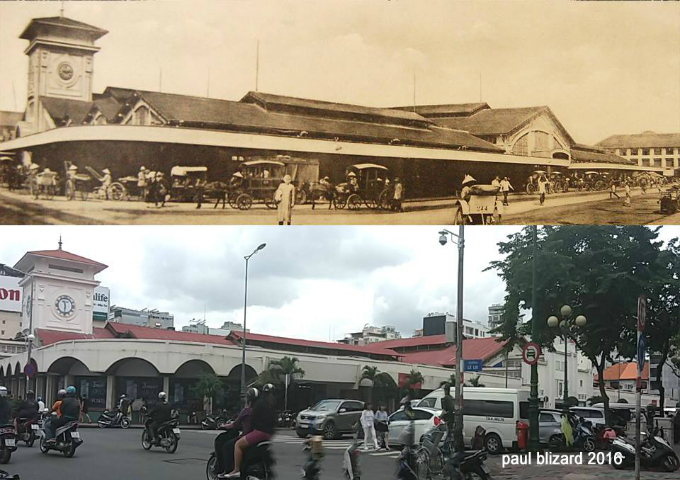
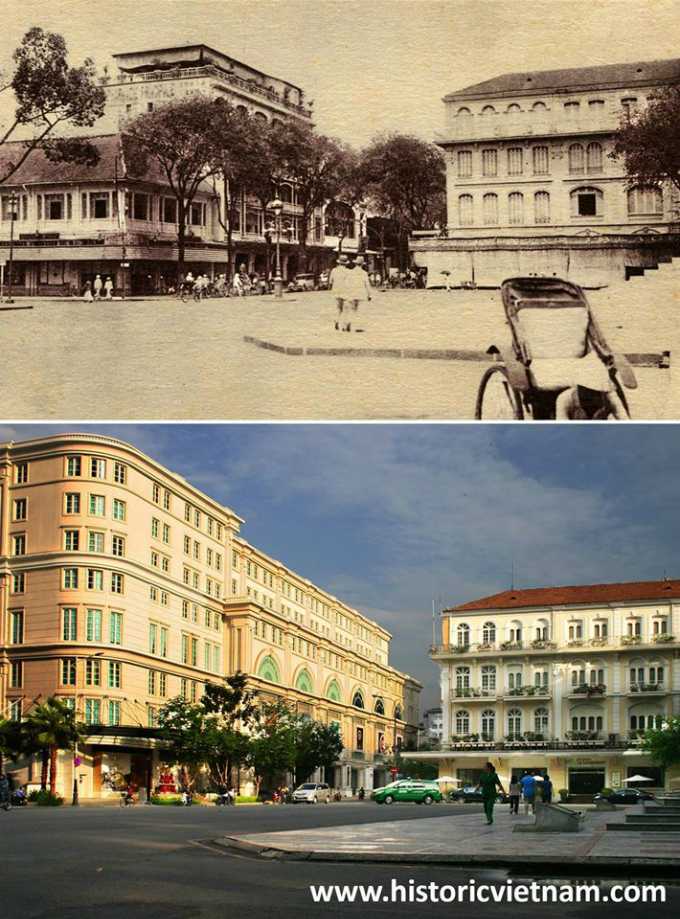
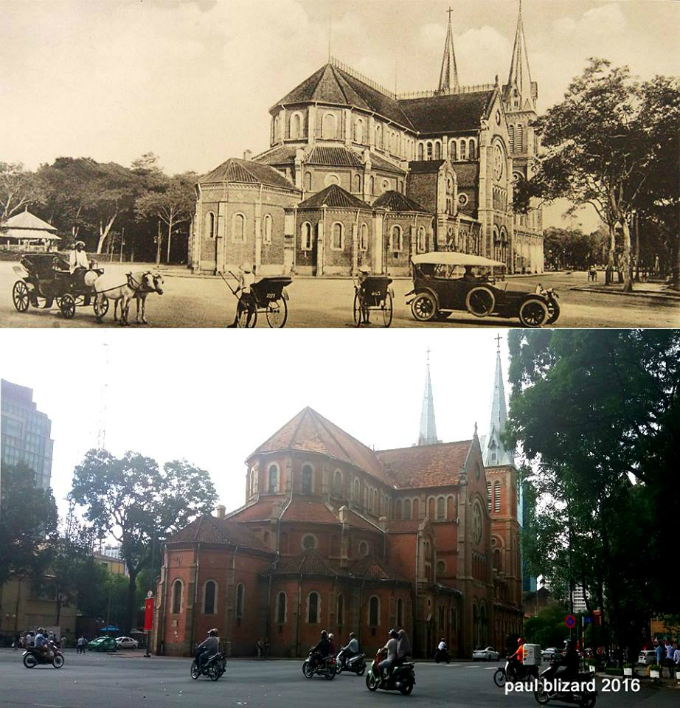


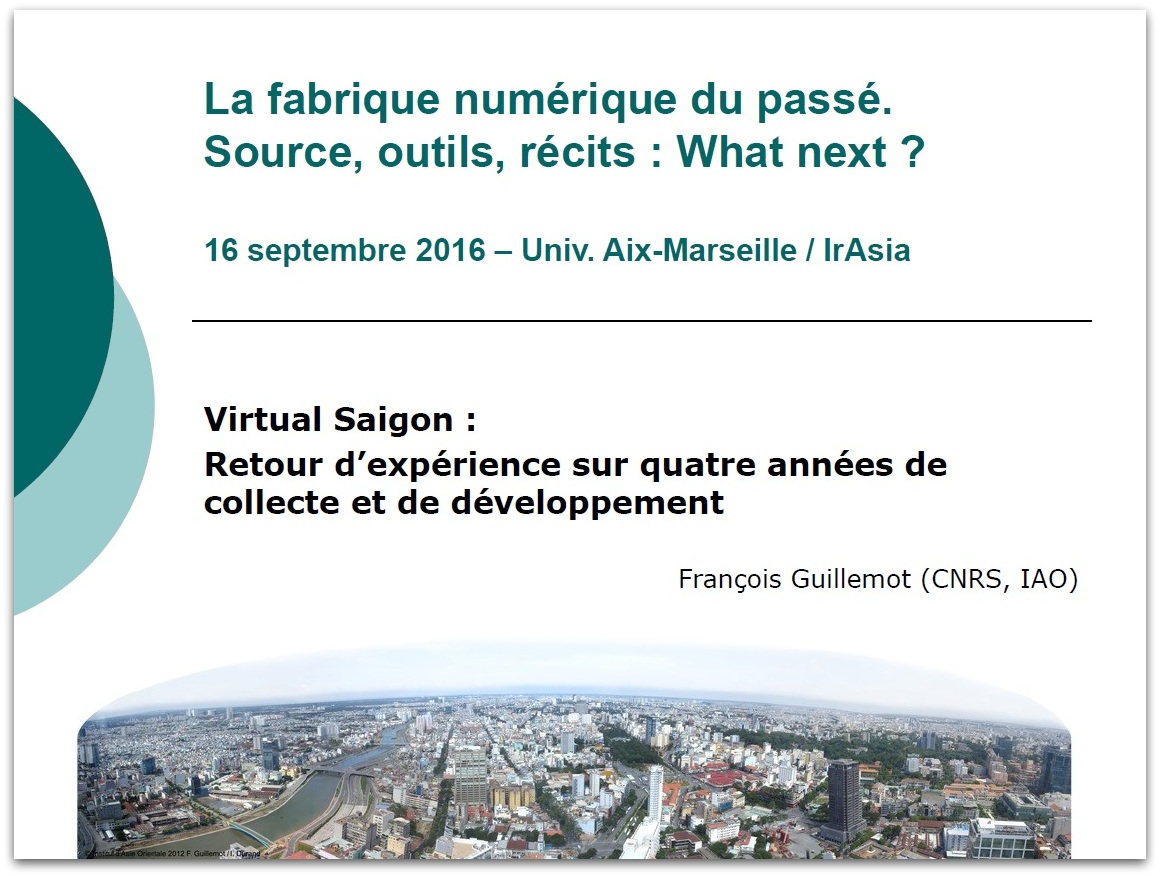

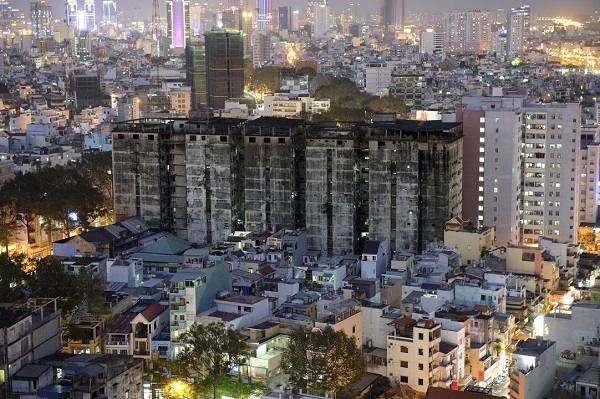







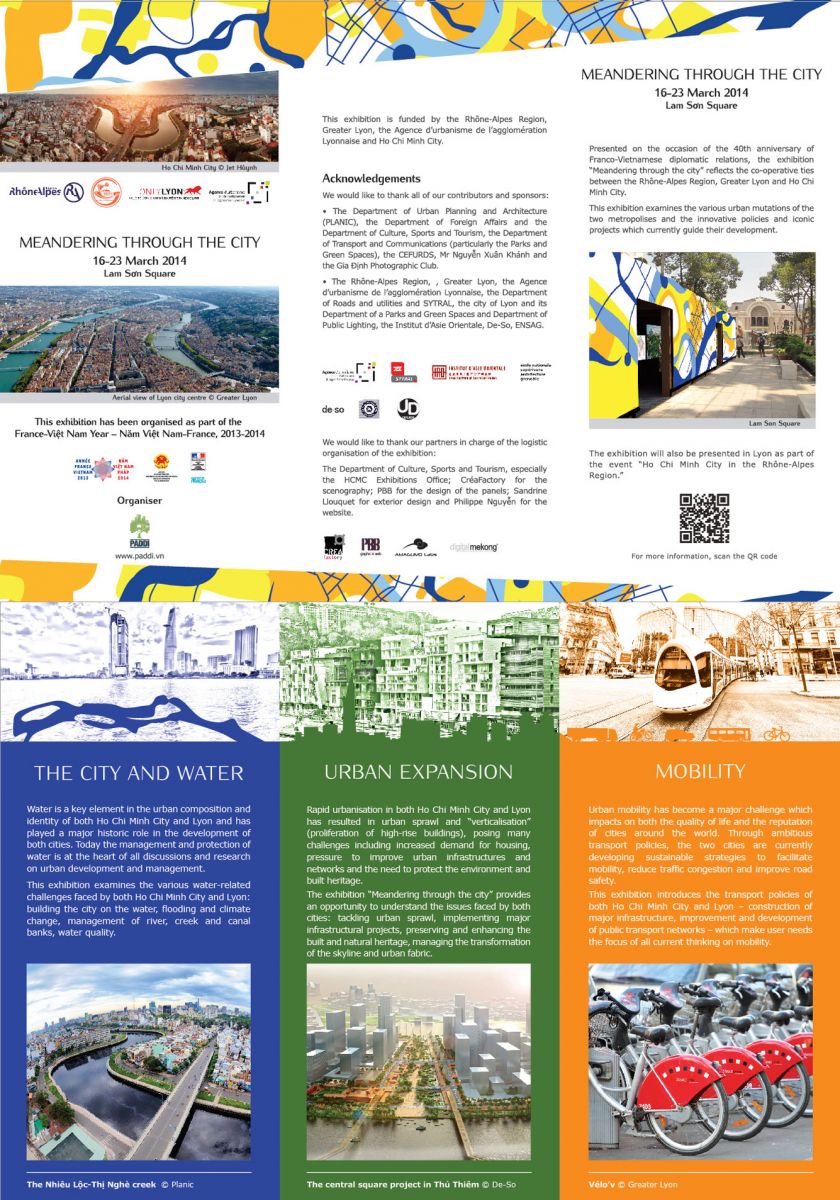
.jpg)


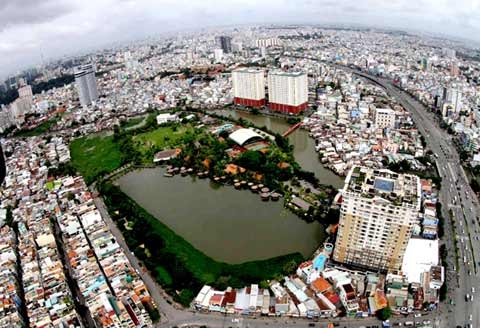
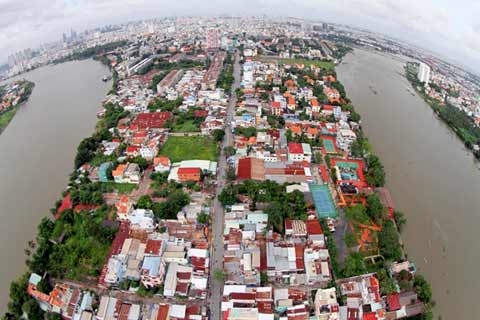
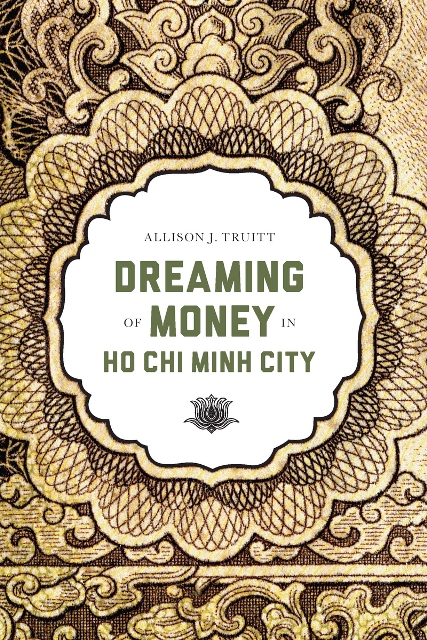

 Andreas Margara, Annkatrin Zink, Marie Gibert, Barbara Cimpa, Ronald Eckert, Michael Bose, Andreas Gravert, Lutz Katzschner & René Burghardt.
Andreas Margara, Annkatrin Zink, Marie Gibert, Barbara Cimpa, Ronald Eckert, Michael Bose, Andreas Gravert, Lutz Katzschner & René Burghardt. Format 225 x 155 mm, 272 Seiten
Format 225 x 155 mm, 272 Seiten
.jpg)
.jpg)
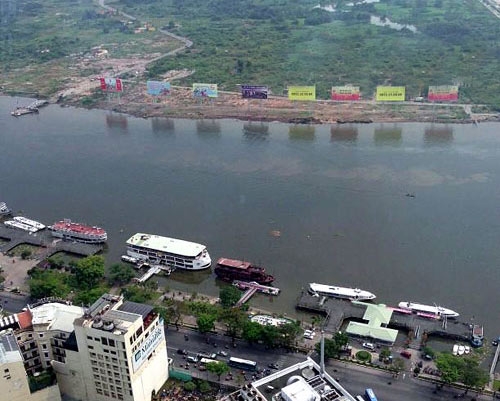
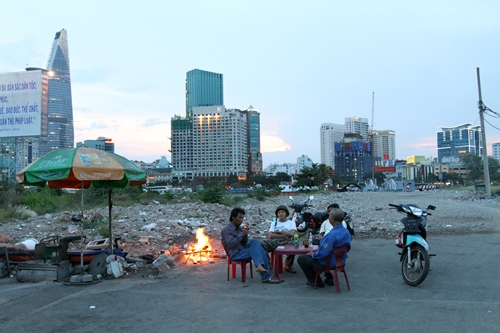
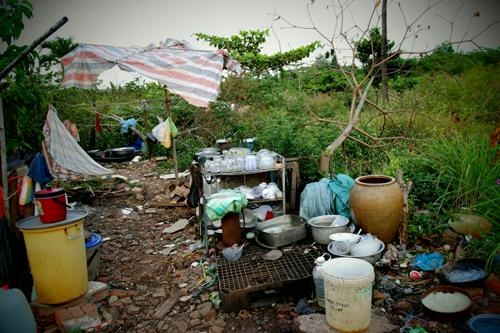
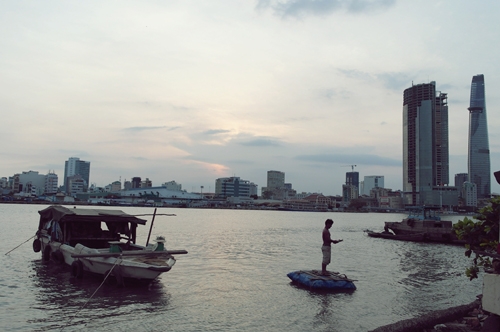
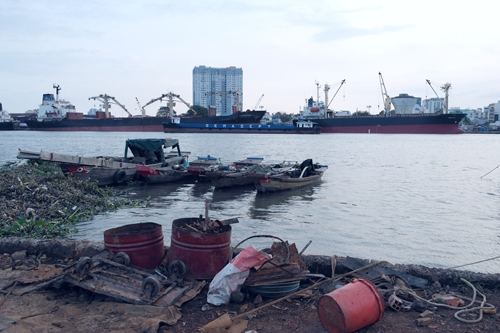
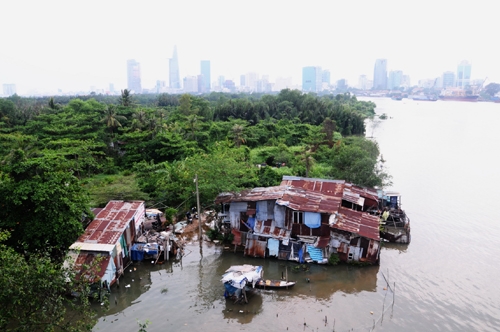
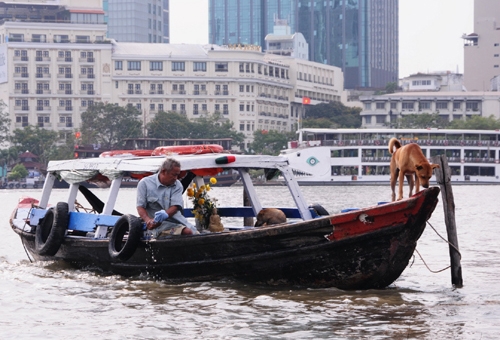
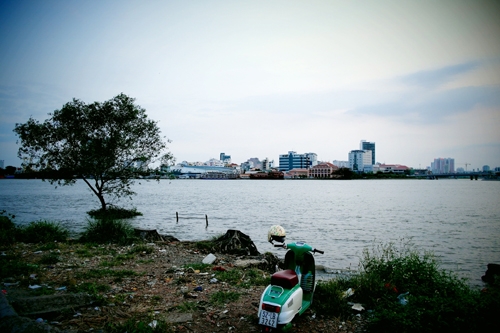




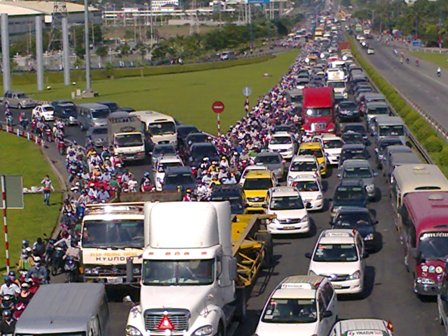 :
:

